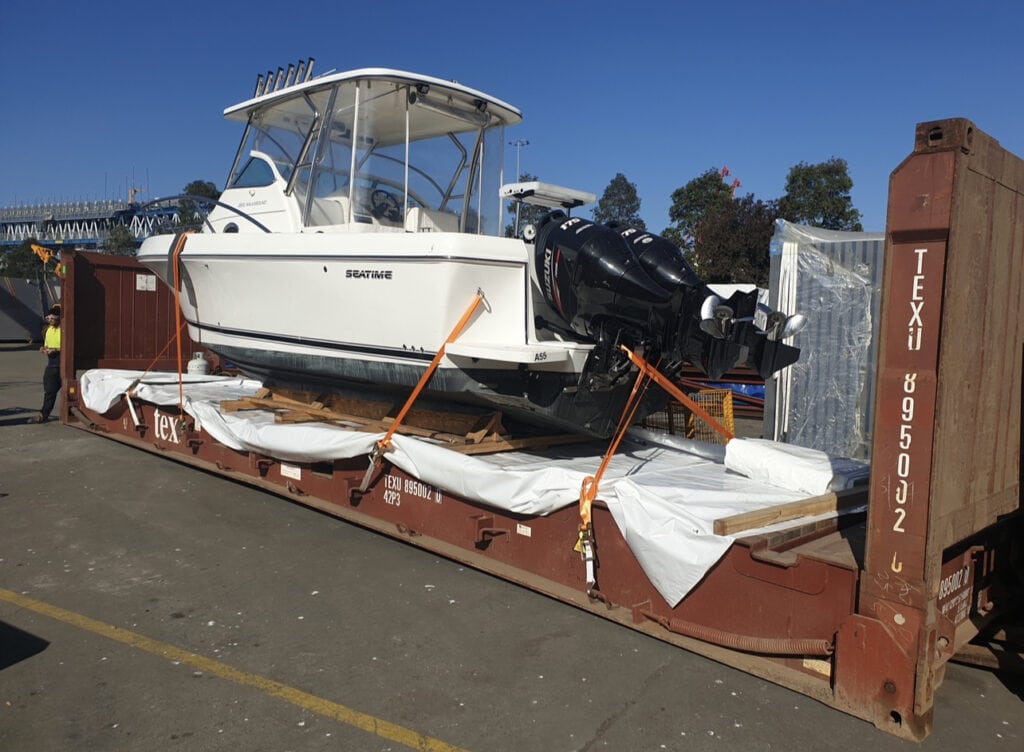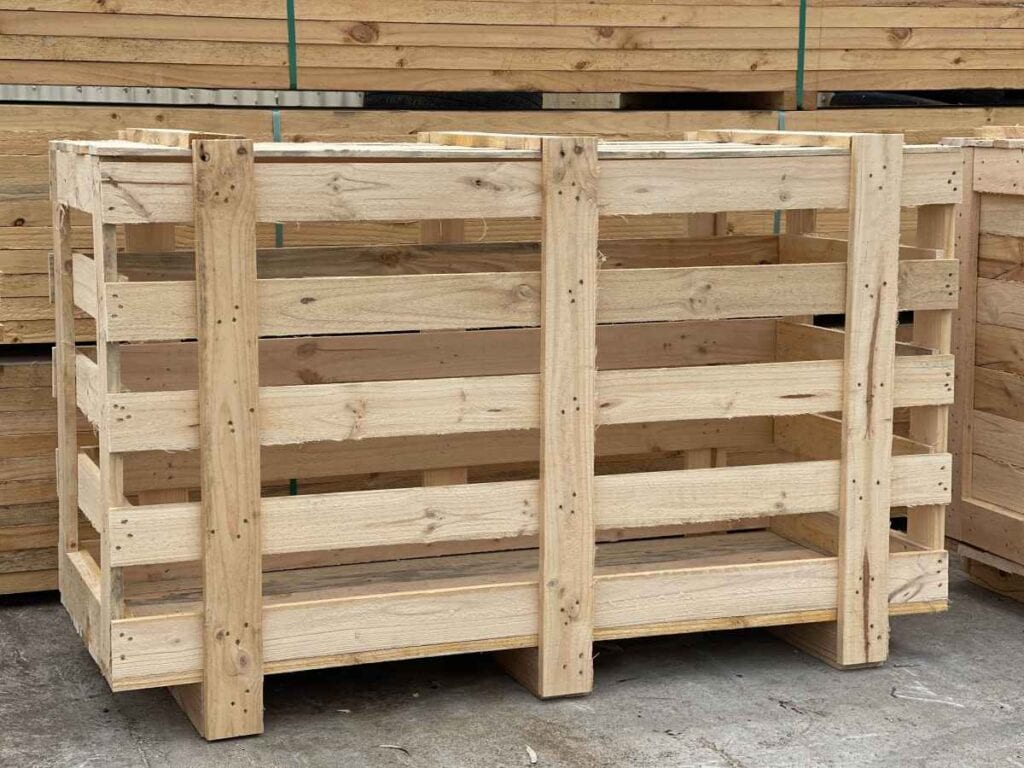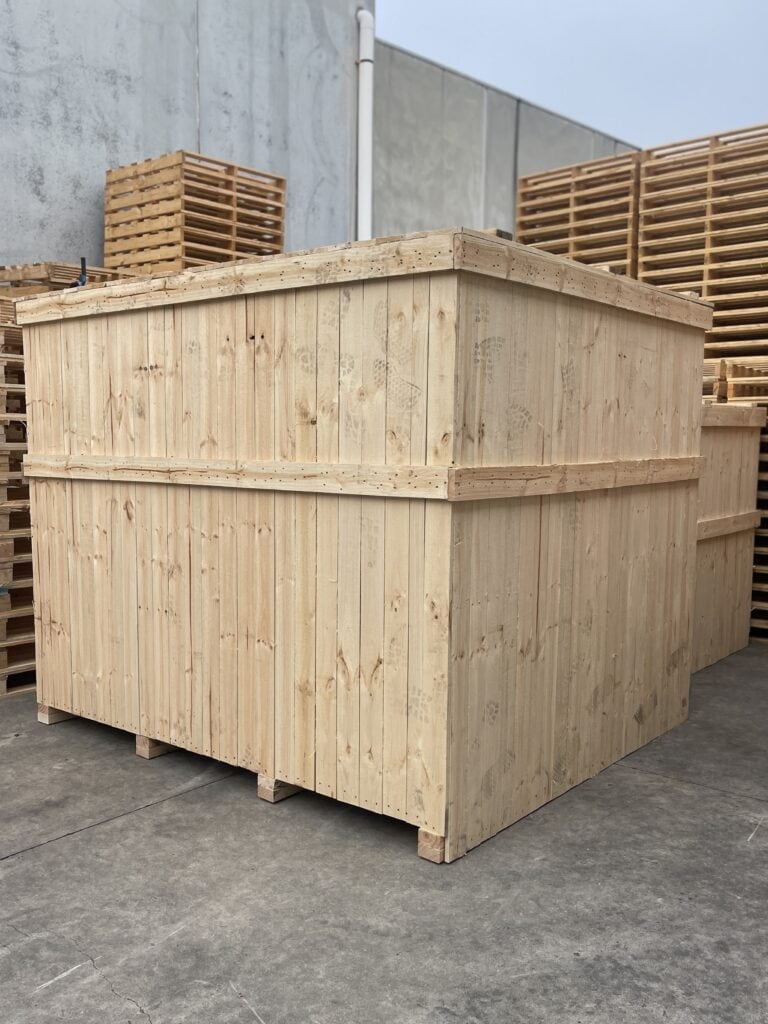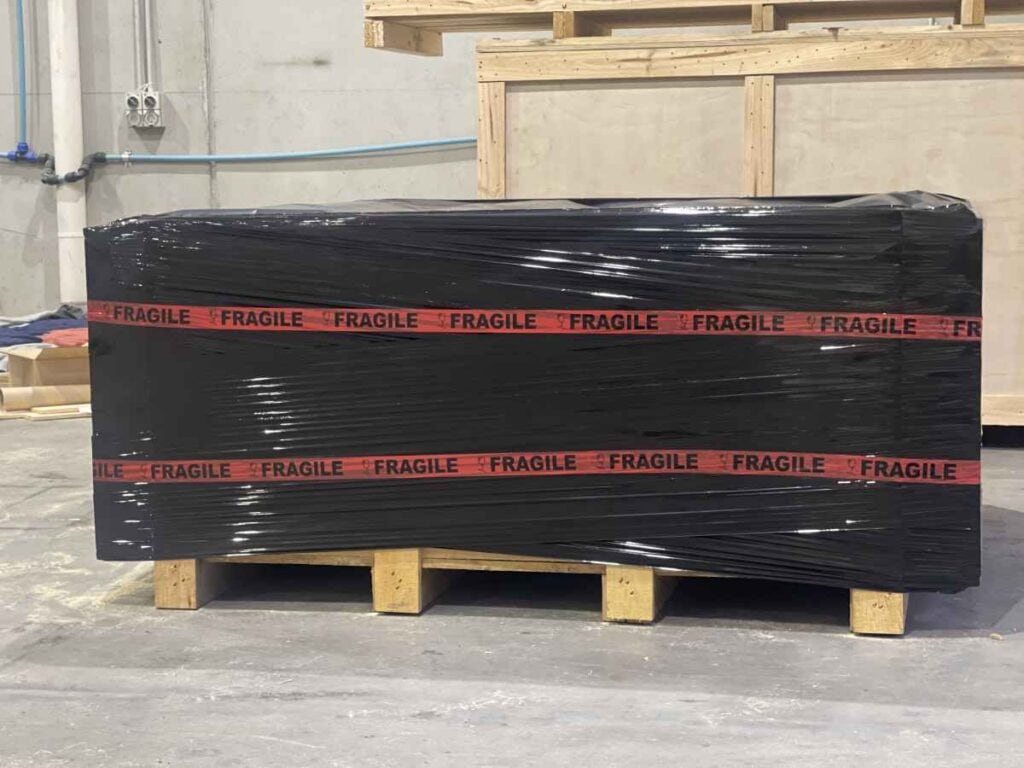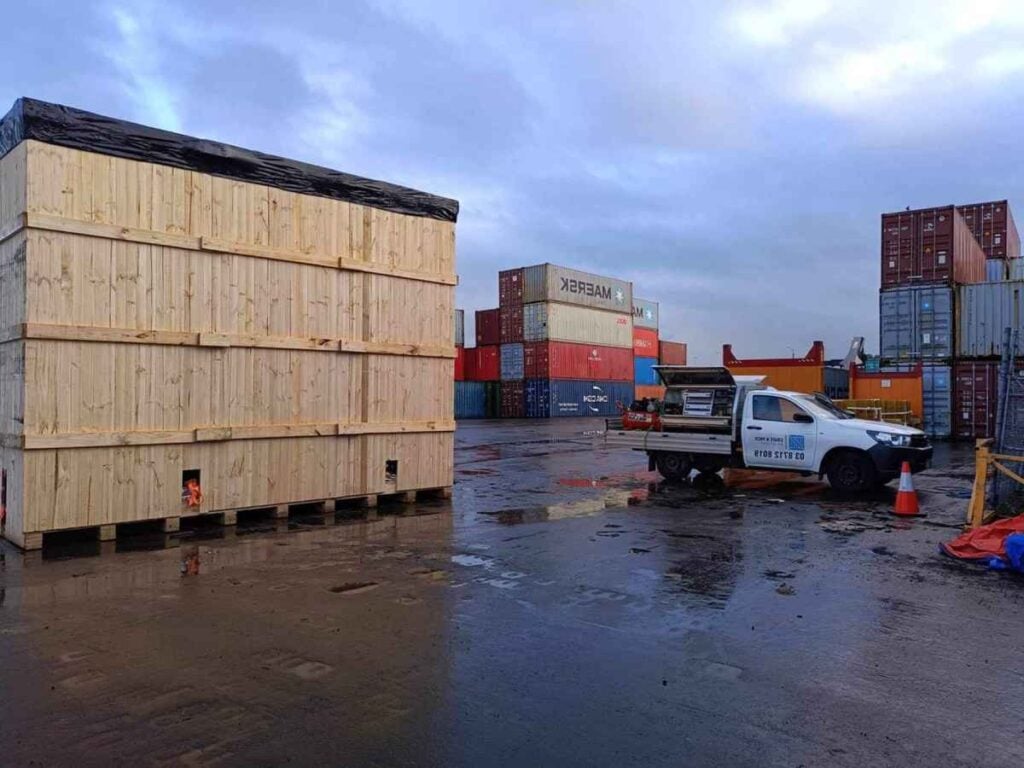Shrink packaging machines are ingenious equipment used in various sectors to wrap and package products using shrink film. This method of packaging not only safeguards products but also improves how they look on store shelves.
These devices use heat to shrink plastic film snugly around a product, a simple and effective premise. This method is extensively utilised because it offers a secure and professional-looking packaging solution for objects of varying sizes and shapes.
In this blog, we'll look at the basic procedure of shrink packaging machines and the steps involved in creating a neatly sealed and visually appealing package.
What Is Shrink Wrap?
Shrink wrap, often called shrink film, is a plastic film used for various packaging purposes. It's made to encapsulate things securely by shrinking and shaping to the shape of whatever it's covering when heated. Bags, rolls, and sheets of shrink wrap are all available to meet a wide range of packaging requirements.
To shrink-wrap an item, first, you wrap it in shrink film, and then you use heat, either from a heat gun or a shrink packaging machine, to contract the film around the product. The film softens and begins to shrink as it is heated, enveloping the goods in a snug and secure covering.
Protection from dust, moisture, manipulation, and physical damage are just some of the many advantages of this wrapping method. Since shrink wrap improves the product's aesthetics, it's widely used in the electronics, food, cosmetics, and other packaging industries.
Packaging things in shrink wrap is a time- and money-saving practice that can be applied to single items or groups of objects for the purposes of storage, shipping, and presentation. This type of packaging is the best option for many products because of its adaptability, resilience, and longevity.
What Exactly Is A Shrink Wrapping Machine?
The process of shrink wrapping can be done using either a heat gun or specialised shrink wrapping equipment. Individuals with a low weekly volume of shrink-wrapped products typically opt for heat gun shrink wrapping.
A shrink wrap machine is essential for organisations that need to wrap several items as quickly and efficiently as feasible.
To determine what type of shrink wrapping equipment is best for your company, you must first evaluate your existing wrapping method and your desired outcomes.
The reason for the wrap, the speed of the generation process, the range of sizes needed, and the urgency of the transition are all factors to consider. Shrink wrapping machines can be customised to fit a wide variety of uses.
Types Of Shrink Wrap Machines And How They Operate
L-Sealer
This particular model of shrink wrap machine was designed to work with larger sheets of shrink wrap. Put the item you want to seal into the L-sealer, turn on the machine, and plug it in if you have one.
The device's two sealing bars are shaped like an inverted "L." Shrink film folds down the two bars to create a pouch-like hole for your items to pass by crinkling.
Once your item is safely positioned within the crease, you must close the three remaining sides of the shrink film. The L-sealer knows when to apply shrink film by sensing when an item has been completely loaded into the machine.
The unheated portion of the shrink wrap around each product is heated by a shrink tunnel in the production line, resulting in a snug and secure wrap.
Chamber Sealer
The name "chamber sealer" comes from the fact that the products are sealed in a chamber or compartment before being wrapped in a film of shrink wrap. While the object is inside this chamber, the shrink wrap is heated to the point where it contracts and produces a firm covering. The time required for this process changes with the plastic's width.
Side Sealer
This method is the most efficient and effective for bundling many different items in a short time. After one side of the product has been wrapped in film, the film pipe is cut in the middle, and a crisscross seal separates the units. The side sealers can have either two or three belts, depending on the application.
To make the final seal before the side seal, a sealer with two belts is slightly larger than an L-sealer and uses the removal of one of the side sealer belts. This is the best option if you require wrapping large items but need more time to extend your production line.
Compared to two-belt sealers, three-belt sealers are slightly more cumbersome to work with, but they allow for more exact spacing of objects before entering the wrapping portion.
Combo Shrink Systems
Combination shrink systems are space-saving, high-performance alternatives to conventional shrink wrappers. Combo systems can either be fully automatic or somewhat automatic.
Heavy-duty combos come packed with features, whereas normal-duty combos are smaller and offer more room for personalisation. Industrial shrink wrapping machines incorporate L-bar sealers and heat shrink tunnels to create secure packages for shipping.
After being placed in a bag using an L-bar sealer, the package is sent through a shrink tunnel, where the film is heated to a high temperature in order to shrink around the contents.
Transparent, firmly wrapped packages can be obtained with shrink wrap machines. Shrink packing is convenient and inexpensive for storing and transporting timber crates, wooden boxes, cartons, multi-packs, and beverage cans.
How Shrink Packaging Machines Work?
Using heat and specialised materials, shrink packaging machines securely wrap products while making the package attractive.
Several steps are involved, all of which improve the packaging's effectiveness and quality.
1. Heating Element Activation
The first step when using a shrink packaging machine is to turn on the heating element. This foundational procedure is the cornerstone of the packaging procedure. The controlled heat generated by the heating source, often a specialised wire, is crucial in the subsequent steps of packing.
The heating element's activation is a precisely managed operation. The machine controls the temperature of the element to ensure it achieves the desired level for effective packaging material shrinkage. This temperature is precisely adjusted to maximise the benefits of shrinking while minimising the risk of damaging the packaged commodity.
Once the heating element is turned on and at the proper temperature, the rest of the packaging procedure can proceed without a hitch. This first stage demonstrates the accuracy and technology underlying shrink packaging machines, allowing them to produce efficient and aesthetically pleasing packaging solutions for various items.
2. Material Insertion
Once the heating element has been turned on, inserting the product is the next step in the packaging process. In this step, the product to be packaged is positioned inside a shrink film or bag. Product characteristics, packaging objectives, and product dimensions all play a role in deciding which shrink film to use.
During insertion, the product is positioned within the selected shrink film with great care to ensure that it is centred and aligned properly. This level of precision is required to get the desired shrinkage and final appearance. The efficacy and efficiency of the packaging process as a whole is enhanced by the precision with which materials are inserted.
The finished package's aesthetic and protective qualities are heavily dependent on the type of shrink film chosen for material insertion. Transparent shrink films let customers see the product within, while opaque films may feature printed logos or text for improved brand recognition.
In packaging, the insertion of materials is a pivotal point because it prepares the way for the following sealing and heating processes. This process exemplifies the precision and care that define modern shrink packaging equipment and guarantees that the packaged goods will be safe and aesthetically pleasing when delivered.
3. Sealing
The next step in the packing process occurs once the product is properly positioned inside the shrink film and before the film is sealed. This crucial process involves sealing the open ends of the shrink film using controlled heat. To get ready for the succeeding phases of shrinkage and chilling, the product is sealed inside the film, creating a barrier.
Accuracy and precision are required during the sealing procedure to ensure the integrity of the package is maintained throughout the manufacturing and shipping processes. The improved heating mechanisms in today's shrink packaging machines ensure that heat is distributed evenly and consistently, resulting in seals that are strong enough to withstand harsh environments.
Sealing involves applying heat to the edges of the shrink film to soften it so it can fuse and form a strong bond. This seal is necessary to protect the product inside from being tampered with or broken. The sealed edges add to the package's overall aesthetic, making it look more refined and professional.
Sealing mechanisms have advanced technologically alongside developments in the packaging sector. Modern machines have settings that let operators tailor sealing temperature and time to individual products and types of shrink film. This versatility ensures that the same equipment can reliably seal various items.
4. Convection Heating
Convection heating follows the sealing step in the packaging process. A sealed package is put through a heat tunnel, where its temperature can be precisely controlled. Convection heating is used so that the film can shrink and contract to fit the shape of the product inside.
A conveyor belt carries the package through the heat tunnel as it is heated by convection. Thanks to the uniform heating in the tunnel, all parts of the package will get to the right temperature for shrinking. Shrink film can be formed to fit the contours of a product by applying controlled heat until it softens and becomes flexible.
One of the most significant developments in shrink packaging technology is convection heating. Because the heat is being distributed uniformly, the package will not shrink in one area while it shrinks uniformly in another.
To achieve the desired shrinkage while preventing any damage to the product, this phase calls for vigilant monitoring to determine the ideal duration of heat application.
Modern shrink packaging machines owe a great deal of their success to the precision and ingenuity of features like convection heating. The technology guarantees uniformity of treatment for each package, leading to safe and aesthetically pleasing shipping containers. By the time the package leaves the heat tunnel, the shrink film has conformed to the product's shape in a clean and polished way.
5. Cooling
The packing process then moves to the cooling phase when the convection heating phase is complete. The final step of the shrink wrapping process is cooling, which sets the package's structure and shape for good. After the package has shrunk due to heat, this step is crucial in preventing unwanted distortion or deformation.
As the package leaves the heat tunnel, it enters a cooling zone. The shrink film must be exposed to cooler air or a controlled environment to harden and secure the package. This consolidation helps the package keep its form, giving off an air of reliability and professionalism.
In the shrink packaging process, the cooling phase is just as important as the heating phase. It works with the heating process to prevent the package from returning to its original form after cooling. The precision and technology built into shrink packaging machines are fully displayed in the delicate balancing act between heating and cooling.
Operators should take care to keep the packaged goods safe after they have been placed in the refrigerator. If the packages are moved or manipulated before fully cured, the result could be ruined. Modern shrink packaging machines are designed with transition mechanisms between the heating tunnel and the cooling chamber to keep the packaging process running as smoothly as possible.
6. Product Ejection
The product is ejected from the packaging when the cooling process is complete. Removing the finished product from the shrink packaging machine is a crucial final step. If this process goes off without a hitch, the product will be ready for distribution with a polished and safe appearance in its packaging.
Efficient and precise work is required for the ejection of products. After the package has cooled and hardened, it is deposited in a predetermined location. This location usually has special mechanisms installed to protect the packages from accidental damage.
These days' shrink wrap machines are built with seamless product ejection in mind. The packages are moved from the refrigeration room to the ejection point using conveyor belts or other technologies. These mechanisms keep the packets in the correct orientation and alignment when ejected.
The shrink wrapping procedure is finished when the product ejection phase is over. It's a perfect example of how technology and human inspection can work together to create products that are not only secure but also aesthetically pleasing. It's time to ship the finished goods to stores where they can create a good first impression on customers.
Why Do Industries Require A Shrink Wrap Labeler?
Everything is shipped around the world in today's globalised economy. When something has to travel a long distance, it must be protected from the elements and hard treatment to retain its original quality. Instead of a guard, it's more accurately described as a barrier. Products' increased storage times will ultimately boost sales and revenue.
Sending your affection to friends and family without worrying that their new gift will be dinged up in transit is as easy as shrink wrapping it. No packaging approach can compete with a low-cost solution and an economically sound customer acquisition method. Goods can be shipped out in response to fluctuations in demand and supply, reducing the need for storage space. In a nutshell, here are some of the reasons why businesses use a shrink wrap machine:
- Profit doubler
- Low-cost enabler
- Low power consumption
- Inventory management is effective.
- Reduces business model losses and waste
Conclusion
Products are wrapped and packaged with shrink film using shrink packaging tools, which are innovative pieces of equipment used in many different industries. This method not only keeps things safe but it also makes them look better on shop shelves. The product is wrapped in shrink film, and then the film is tightened around the product with heat. When heated, the film softens and shrinks, making it a safe and professional-looking way to package things of different sizes and shapes.
You can use a heat gun or special tools to use a shrink packing machine. The L-Sealer is made for larger sheets of shrink wrap, while the Chamber Sealer is used to seal goods in a chamber before they are wrapped in shrink wrap film. With two or three belts, depending on the job, side sealers make it easy to bundle a lot of things quickly.
Combination shrink systems are better than traditional shrink wrappers because they take up less room and do a better job. Heavy-duty combos have more features, while regular-duty combos are smaller and give you more room to make them your own. Industrial shrink wrap tools use L-bar sealers and heat shrink tunnels to make secure shipping packages. With shrink wrap tools, you can make clear, tightly wrapped packages. This makes it easy and cheap to store and move boxes, cartons, multi-packs, and beverage cans.
Shrink packaging machines use heat and special materials to wrap things tightly and make the package look nice. The first step is to turn on the heating element, which adjusts the temperature to the right amount for shrinking. This makes sure that the packing process works well and looks good.
Next, the product is carefully placed in a shrink film or bag to get the shrinkage and finished look that the company wants. The look and protection of the finished package rely on the type of shrink film used to put the materials inside. Transparent shrink films let customers see what's inside, while opaque films can have images or text printed on them to help customers remember the brand.
The next step in the packing process is sealing. Open ends of the shrink film are sealed with controlled heat. This makes sure that the package stays intact during the making and sending processes. Modern machines have settings that let workers change the temperature and length of time it takes to seal based on the product and type of shrink film being used.
After the closing step, the shrink film is heated by convection, which makes it shrink and contract to fit the shape of the item inside. This technology makes sure that each package gets the same care so shipping containers are safe and look good.
The next step in the process of packing is letting the package cool. This sets the structure and shape of the package for good. For the shrink film to harden and keep the package safe, it needs to be introduced to cooler air or a controlled environment. This gives the package an air of reliability and professionalism.
After putting packaged goods in the fridge, operators should be careful to keep them safe. Modern shrink packaging machines are made with transition mechanisms between the heating tunnel and the cooling chamber to keep the packaging process running easily.
Product ejection is an important part of shrink packing because it makes sure the product is ready for distribution and looks good. Work must be done quickly and accurately, and shrink wrap machines are made so that products come out of them smoothly. Using conveyor belts or other technologies, packages are moved from the freezer room to the ejection point.
This keeps the packages in the right place and in the right direction. Labels made of shrink wrap are used in industries to protect goods from the elements and rough handling, which increases sales and revenue. Shrink wrapping is a low-cost solution and a smart way to get new customers. It allows goods to be shipped out in reaction to changes in supply and demand, which saves space.

Content Summary
- Shrink packaging machines are versatile equipment used for wrapping products in various industries.
- The machines use heat to tighten plastic film around products, enhancing their appearance and security.
- Shrink wrap or shrink film is the primary material used in this packaging method.
- The film adapts to the shape of the product when heated, providing a snug fit.
- Shrink wrapping offers protection against dust, moisture, and physical damage.
- This packaging technique is prevalent in the food, electronics, and cosmetics industries.
- Shrink wrapping is both time-efficient and cost-effective.
- Shrink wrapping machines are essential for organisations that require high-volume packaging.
- Companies need to consider factors like speed and size range when choosing a shrink wrapping machine.
- These machines can be customised for different applications and product sizes.
- The L-Sealer model is designed for larger sheets of shrink wrap and has two sealing bars in an inverted "L" shape.
- A Chamber Sealer encloses products in a compartment before wrapping them.
- Side Sealers are the most efficient machines for wrapping multiple items quickly.
- Combo Shrink Systems are versatile, space-saving alternatives to traditional machines.
- Industrial shrink wrapping machines combine L-bar sealers with heat shrink tunnels.
- Shrink packaging machines improve both the effectiveness and quality of the packaging.
- The first step in the process is activating the heating element, which is meticulously managed.
- Product insertion is the next step, where the item is placed inside the chosen shrink film.
- The type of shrink film used can affect both the aesthetics and the protective qualities of the final package.
- Sealing involves fusing the open ends of the film using controlled heat.
- Modern machines offer settings to tailor sealing temperature for different products.
- Convection heating ensures uniform shrinkage of the film around the product.
- This stage of the process requires vigilant monitoring to prevent product damage.
- Cooling is the final step and is crucial for setting the package's structure.
- The cooling phase works in tandem with the heating phase to ensure the package retains its shape.
- Packages are moved to a predetermined location once they are ejected from the machine.
- Modern shrink wrap machines are designed for seamless product ejection.
- Finished products are ready for distribution, offering a polished and secure appearance.
- Shrink wrapping acts as a protective barrier for products during transit.
- The method is particularly beneficial for goods that require long storage times.
- Shrink wrapping is an economically sound choice for customer acquisition.
- It reduces the need for storage space, responding effectively to supply and demand fluctuations.
- Shrink wrap machines are considered profit doublers for businesses.
- They also enable low-cost production.
- Power consumption of these machines is relatively low, adding to their cost-effectiveness.
- Effective inventory management is another advantage of using shrink wrapping machines.
- The method also minimises losses and waste in the business model.
- The L-Sealer model uses two sealing bars and a shrink tunnel for a secure wrap.
- Chamber Sealers heat shrink wrap inside a compartment to create a snug covering.
- Side Sealers can have either two or three belts, depending on the application.
- Heavy-duty combo systems offer advanced features, while normal-duty ones allow for more customisation.
- The heating element's temperature is carefully managed to optimise the shrinking process.
- The sealing process ensures that the package can withstand harsh environmental conditions.
- Convection heating contributes to the uniformity and quality of the finished product.
- Cooling helps the package maintain its professional appearance and reliability.
- The ejection point in modern machines is designed to protect the packages from accidental damage.
- Shrink wrapping can be used for both single items and groups of objects.
- The packaging process involves a series of steps, each contributing to the overall effectiveness and appearance of the product.
- Businesses can send products long distances without worrying about damage, thanks to shrink wrapping.
- Using a shrink wrap machine offers benefits like effective inventory management and reduced business losses.
Frequently Asked Questions
Shrink packaging creates an airtight seal that protects products from moisture, dust, and other external factors, extending shelf life.
Shrink packaging can easily conform to irregular shapes, ensuring a snug fit and appealing presentation.
Many shrink films are recyclable, contributing to environmental sustainability. However, the environmental impact depends on the type of film used.
While shrink packaging is versatile, extremely large or heavy products might require specialised machinery and materials.
Shrink packaging is safe for edible products and is commonly used in the food industry.

